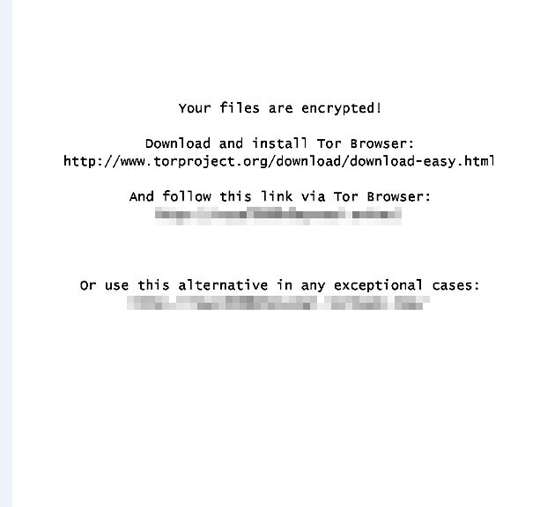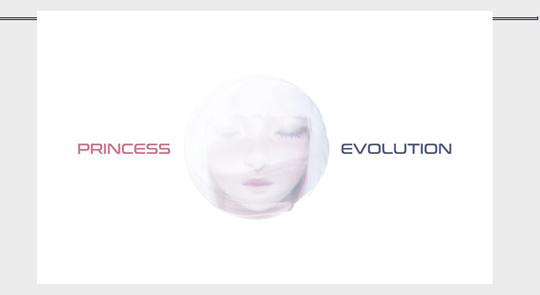RANSOM_PRINCESSLOCKER.B
Trojan-Ransom.Win32.Encoder.e (Kaspersky), Packed.Generic.525 (Norton)
Windows


Threat Type: Ransomware
Destructiveness: No
Encrypted: Yes
In the wild: Yes
OVERVIEW
Downloaded from the Internet
This Ransomware arrives on a system as a file dropped by other malware or as a file downloaded unknowingly by users when visiting malicious sites.
It connects to a website to send and receive information.
It drops files as ransom note.
TECHNICAL DETAILS
273,920 bytes
EXE
No
06 Aug 2018
Connects to URLs/IPs, Launches DoS/DDoS attacks, Displays message/message boxes, Encrypts files
Arrival Details
This Ransomware arrives on a system as a file dropped by other malware or as a file downloaded unknowingly by users when visiting malicious sites.
Installation
This Ransomware drops the following files:
- %Application Data%\MeGEZan.VDE
(Note: %Application Data% is the current user's Application Data folder, which is usually C:\Documents and Settings\{user name}\Application Data on Windows 2000, XP, and Server 2003, or C:\Users\{user name}\AppData\Roaming on Windows Vista, 7, and 8.)
It adds the following processes:
- %Program Files%\Internet Explorer\iexplore.exe" -nohome ← Command to set the Internet Explorer's home page disabled
(Note: %Program Files% is the default Program Files folder, usually C:\Program Files in Windows 2000, Server 2003, and XP (32-bit), Vista (32-bit), 7 (32-bit), and 8 (32-bit), or C:\Program Files (x86) in Windows XP (64-bit), Vista (64-bit), 7 (64-bit), and 8 (64-bit).)
It adds the following mutexes to ensure that only one of its copies runs at any one time:
- hoJUpcvgHA
Other System Modifications
This Ransomware modifies the following registry key(s)/entry(ies) as part of its installation routine:
HKEY_CURRENT_USER\Control Panel\Desktop value
Wallpaper = %User Profile%\Pictures\img.png
Backdoor Routine
This Ransomware connects to the following websites to send and receive information:
- {BLOCKED}.{BLOCKED}.195.0/23:6901
Information Theft
This Ransomware gathers the following data:
- User Name
- Name of Active Network Interface
- System Locale ID
- OS Version
- Victim ID (Generated by the malware)
Other Details
This Ransomware encrypts files with the following extensions:
- .1cd
- .3ds
- .3gp
- .accdb
- .ai
- .ape
- .asp
- .aspx
- .bc6
- .bc7
- .bmp
- .cdr
- .cer
- .cfg
- .cfgx
- .cpp
- .cr2
- .crt
- .crw
- .csr
- .csv
- .dbf
- .dbx
- .dcr
- .dfx
- .dib
- .djvu
- .doc
- .docm
- .docx
- .dwg
- .dwt
- .dxf
- .dxg
- .eps
- .htm
- .html
- .ibank
- .indd
- .jfif
- .jpe
- .jpeg
- .jpg
- .kdc
- .kwm
- .max
- .md
- .mdb
- .mdf
- .odb
- .odc
- .odm
- .odp
- .ods
- .odt
- .orf
- .p12
- .p7b
- .p7c
- .pef
- .pem
- .pfx
- .php
- .pl
- .png
- .pps
- .ppt
- .pptm
- .pptx
- .psd
- .pst
- .pub
- .pwm
- .py
- .qbb
- .qbw
- .raw
- .rtf
- .sln
- .sql
- .sqlite
- .svg
- .tif
- .tiff
- .txt
- .vcf
- .wallet
- .wpd
- .xls
- .xlsm
- .xlsx
- .xml
It does the following:
- It displays the following as ransom notes:


- It displays the following upon accessing the dropped .HTML ransom note:

Ransomware Routine
This Ransomware avoids encrypting files with the following strings in their file path:
- \appdata\
- \chrome\
- \internet explorer\
- \local settings\
- \microsoft\
- \mozilla\
- \msocache\
- \program files (x86)\
- \program files\
- \programdata\
- \recycler\
- \system volume information\
- \windows\
- \$recycle.bin\
It drops the following file(s) as ransom note:
- %User Profile%\img.png
- {Encrypted Directory}\(_H0W_TO_REC0VER_{Random Characters}.txt
- {Encrypted Directory}\(_H0W_TO_REC0VER_{Random Characters}.html
- {Encrypted Directory}\(_H0W_TO_REC0VER_{Random Characters}.url
(Note: %User Profile% is the current user's profile folder, which is usually C:\Documents and Settings\{user name} on Windows 2000, XP, and Server 2003, or C:\Users\{user name} on Windows Vista, 7, and 8.)
SOLUTION
9.850
14.426.07
06 Aug 2018
14.427.00
07 Aug 2018
Step 1
Before doing any scans, Windows XP, Windows Vista, and Windows 7 users must disable System Restore to allow full scanning of their computers.
Step 2
Note that not all files, folders, and registry keys and entries are installed on your computer during this malware's/spyware's/grayware's execution. This may be due to incomplete installation or other operating system conditions. If you do not find the same files/folders/registry information, please proceed to the next step.
Step 3
Restart in Safe Mode
Step 4
Delete this registry value
Important: Editing the Windows Registry incorrectly can lead to irreversible system malfunction. Please do this step only if you know how or you can ask assistance from your system administrator. Else, check this Microsoft article first before modifying your computer's registry.
- In HKEY_CURRENT_USER\Control Panel\Desktop value
- Wallpaper = %User Profile%\Pictures\img.png
- Wallpaper = %User Profile%\Pictures\img.png
Step 5
Search and delete this file
- %Application Data%\MeGEZan.VDE
- %User Profile%\img.png
- {Encrypted Directory}\(_H0W_TO_REC0VER_{Random Characters}.txt
- {Encrypted Directory}\(_H0W_TO_REC0VER_{Random Characters}.html
- {Encrypted Directory}\(_H0W_TO_REC0VER_{Random Characters}.url
Step 6
Restart in normal mode and scan your computer with your Trend Micro product for files detected as RANSOM_PRINCESSLOCKER.B. If the detected files have already been cleaned, deleted, or quarantined by your Trend Micro product, no further step is required. You may opt to simply delete the quarantined files. Please check this Knowledge Base page for more information.
Step 7
Restore encrypted files from backup.
Step 8
Scan your computer with your Trend Micro product to delete files detected as RANSOM_PRINCESSLOCKER.B. If the detected files have already been cleaned, deleted, or quarantined by your Trend Micro product, no further step is required. You may opt to simply delete the quarantined files. Please check the following Trend Micro Support pages for more information:
Did this description help? Tell us how we did.

